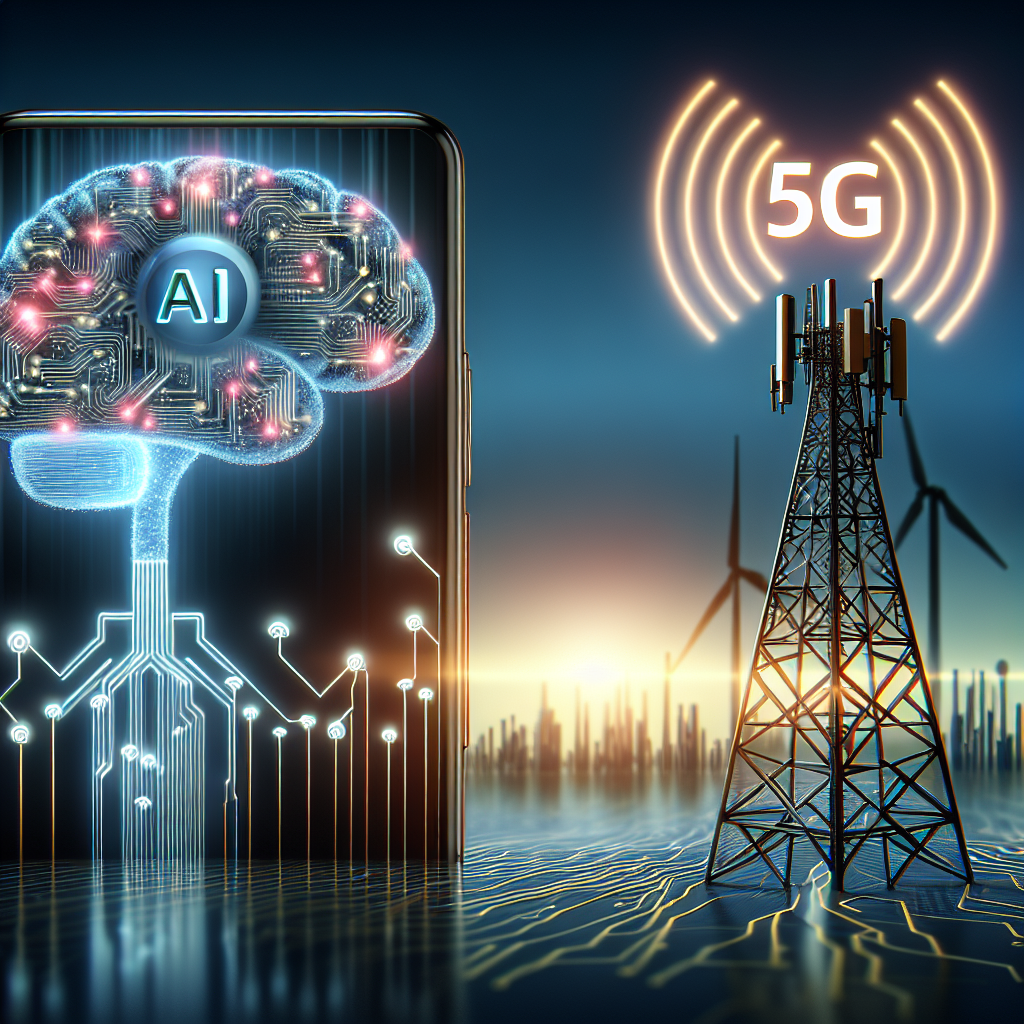AI and 5G are two cutting-edge technologies that are revolutionizing the telecommunications industry. When combined, these technologies have the potential to transform the way we communicate, work, and live. In this article, we will explore the relationship between AI and 5G, the benefits of their integration, and the challenges that may arise.
AI, or artificial intelligence, refers to the simulation of human intelligence processes by machines. This includes learning, reasoning, problem-solving, and decision-making. AI has been increasingly incorporated into various industries, including healthcare, finance, and transportation, to improve efficiency, accuracy, and productivity.
5G, on the other hand, is the fifth generation of wireless technology that promises faster speeds, lower latency, and increased capacity compared to its predecessors. 5G networks have the potential to support a wide range of applications, from autonomous vehicles to smart cities, by providing reliable and high-speed connectivity.
When AI and 5G are combined, they create a powerful synergy that enables new capabilities and opportunities in the telecommunications industry. Here are some of the key ways in which AI and 5G complement each other:
1. Enhanced Data Processing: 5G networks generate massive amounts of data due to their high-speed and low-latency capabilities. AI can help process and analyze this data in real-time, enabling businesses to make faster and more informed decisions. For example, AI algorithms can analyze network traffic patterns to optimize network performance and reliability.
2. Improved Network Management: AI can be used to automate network management tasks, such as optimizing network resources, detecting anomalies, and predicting network failures. By leveraging AI algorithms, telecom operators can improve network efficiency, reduce downtime, and enhance the overall user experience.
3. Personalized Services: AI can analyze user behavior and preferences to deliver personalized services and content. With 5G’s high-speed connectivity, AI-powered applications can provide immersive experiences, such as virtual reality gaming, augmented reality shopping, and real-time video streaming.
4. Edge Computing: 5G networks rely on edge computing to reduce latency and improve performance. AI algorithms can be deployed at the network edge to process data closer to where it is generated, enabling faster response times and better user experiences. This is particularly important for applications that require real-time processing, such as autonomous vehicles and remote surgery.
5. Autonomous Systems: AI and 5G can enable the deployment of autonomous systems, such as drones, robots, and industrial machines. These systems can communicate with each other over 5G networks and make intelligent decisions based on real-time data and analysis. This can improve efficiency, safety, and productivity in various industries.
Despite the numerous benefits of integrating AI and 5G, there are also challenges and concerns that need to be addressed. Some of the key challenges include:
1. Security and Privacy: With the increased use of AI and 5G, there is a growing concern about cybersecurity threats and data privacy issues. AI algorithms can be vulnerable to attacks, and 5G networks can be targeted for malicious activities. It is essential to implement robust security measures to protect sensitive data and ensure the integrity of the network.
2. Regulatory Compliance: The deployment of AI and 5G technologies may raise regulatory challenges related to data protection, competition, and consumer rights. Telecommunications companies need to comply with various regulations and standards to ensure ethical and responsible use of these technologies.
3. Skills Gap: The rapid advancement of AI and 5G technologies requires a skilled workforce with expertise in areas such as machine learning, data science, and network engineering. Companies need to invest in training and development programs to address the skills gap and build a competent workforce for the future.
4. Infrastructure Costs: The deployment of 5G networks and AI applications requires significant investment in infrastructure, equipment, and resources. Telecommunications companies need to carefully assess the costs and benefits of implementing these technologies to ensure a positive return on investment.
5. Ethical Considerations: The use of AI in telecommunications raises ethical questions related to bias, discrimination, and accountability. It is essential to develop ethical guidelines and frameworks to ensure the responsible use of AI and 5G technologies and protect the rights and interests of users.
In conclusion, AI and 5G are a match made in telecommunications, offering unprecedented opportunities for innovation, efficiency, and connectivity. By combining the power of AI algorithms with the speed and capacity of 5G networks, businesses can unlock new possibilities and deliver enhanced services to their customers. However, it is crucial to address the challenges and concerns associated with these technologies to ensure a secure, ethical, and sustainable future for the telecommunications industry.
FAQs:
Q: How will AI and 5G benefit consumers?
A: AI and 5G can benefit consumers by providing faster speeds, lower latency, personalized services, and enhanced user experiences. Consumers can enjoy immersive applications, such as virtual reality gaming, real-time video streaming, and augmented reality shopping, with the help of AI algorithms and 5G networks.
Q: What are some examples of AI-powered applications in the telecommunications industry?
A: Some examples of AI-powered applications in the telecommunications industry include network optimization, predictive maintenance, personalized recommendations, and autonomous systems. AI algorithms can analyze network data, detect anomalies, and make intelligent decisions to improve network performance and reliability.
Q: How can businesses leverage AI and 5G to gain a competitive advantage?
A: Businesses can leverage AI and 5G to gain a competitive advantage by improving efficiency, productivity, and customer satisfaction. By deploying AI-powered applications over 5G networks, businesses can streamline operations, deliver personalized services, and unlock new revenue streams in the telecommunications industry.

